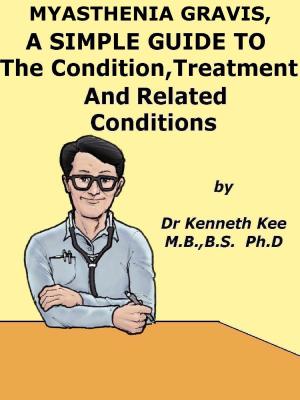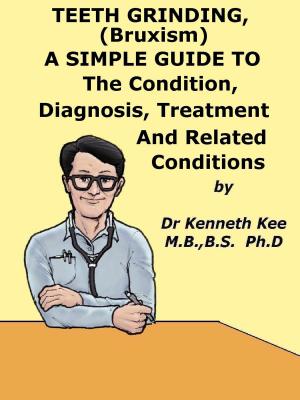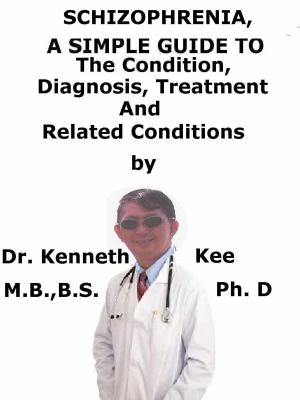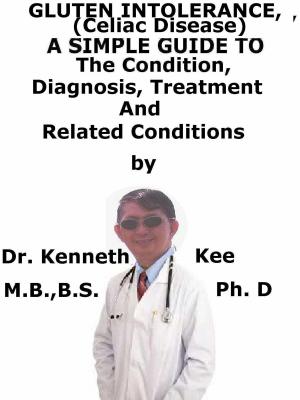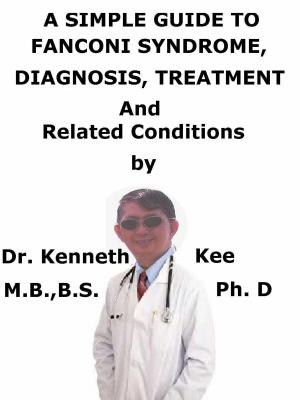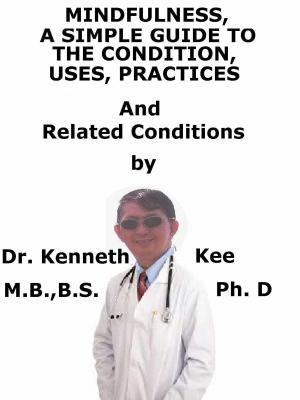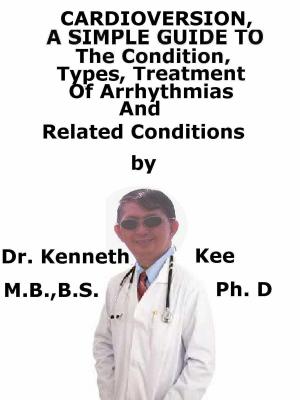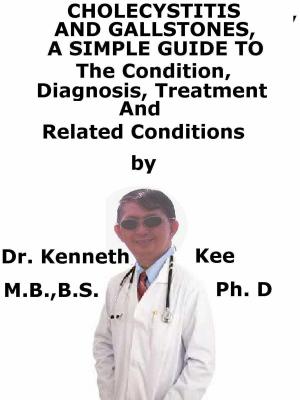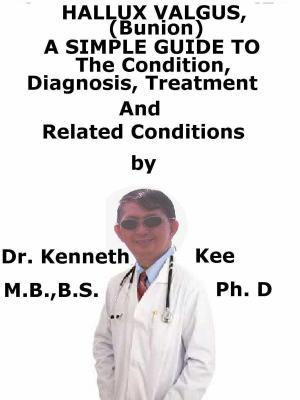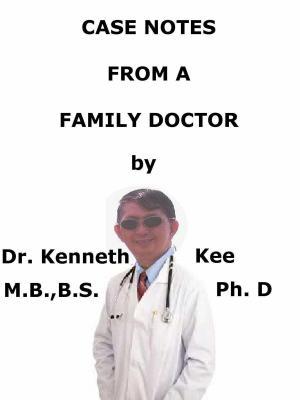Deviated Nose Septum, A Simple Guide To The Condition, Diagnosis, Treatment And Related Conditions
Nonfiction, Health & Well Being, Health, Ailments & Diseases, Respiratory, Medical, Specialties, Otorhinolaryngology| Author: | Kenneth Kee | ISBN: | 9781370269570 |
| Publisher: | Kenneth Kee | Publication: | September 27, 2017 |
| Imprint: | Smashwords Edition | Language: | English |
| Author: | Kenneth Kee |
| ISBN: | 9781370269570 |
| Publisher: | Kenneth Kee |
| Publication: | September 27, 2017 |
| Imprint: | Smashwords Edition |
| Language: | English |
A deviated nose septum is a disorder in which the nasal septum (the bone and cartilage that divide the nasal cavity of the nose) is substantially off center, or crooked, making breathing difficult.
Most people have some form of difference in the size of their right and left nasal passages.
Only the more severe differences cause considerable breathing disorders and need treatment.
The deviated nose septum can be observed when the delicate wall (nasal wall) of nose between the nostrils is displaced to any side
It can be seen that the wall of nose dislocated or different causes the nasal entrance smaller.
When a deviated nose septum is severe, it is able to obstruct any side of one's nose and reduce the airflow which results in breathing difficulty.
The effect of dryness in air flowing through nose is another indication of deviated nose septum which induces the encrustation and loss of blood in some people.
Nasal blockage can occur from these abnormal deviations from swelling of the tissues covering the nose or from either of the two.
Causes:
Congenital: occurs at birth
Injury: collision, contact body sports
Children are more vulnerable to such deviations as the bones are still soft.
As the body becomes older, the structure of the nose is likely to get affected even more and produces a worst situation
It causes acute nasal blockage as the nasal passage becomes narrow due to the dislocation.
Symptoms:
In most cases of deviated nose septum there is almost no indication of any form.
The most frequent symptom of a deviated nose septum is nasal congestion, with one side of the nose being more congested than the other, along with difficulty breathing.
Frequent Nosebleeds
Facial pain
Headache
Postnasal drip
Loud breathing and snoring during sleep
Obstructive sleep apnea
Some people have the habit of sleeping on one particular side.
They feel free flow of air during sleeping on that side.
Diagnosis:
The doctor normally sprays a decongestant spray in to the nose before and after the examination
Endoscopic examination of the nose is done
Any deviation of the septum is seen easily
Initial Treatment
The treatment for deviated nose septum may start with treating the obvious symptoms of the disorder such as swollen lining in the nose resulting in the drainage obstruction in the nose.
The doctor may use these medicines for deviated nose septum at the start:
A decongestant may be given to reduce the swollen nose tissue.
It assists to open the passage of the nose properly and let air enter through both holes
Decongestant is available in both spray and tablet form.
Any incorrect dosages can lead to the dependency on the decongestant and involve the heart rate or the blood pressure.
During initial treatment, doctors normally also give antihistamines to counter the nasal allergies.
Some antihistamines have more effect on the body and make it drowsy so activities like driving should be avoided under such situations.
On many occasions doctors use nasal steroid sprays to reduce the inflammation in the nasal passage.
It should be well noted that medicines can only fix this problem temporarily and not permanently.
If medicines alone do not provide adequate relief, a surgical procedure called septoplasty may be needed to correct a crooked septum and improve breathing.
Septoplasty is the frequent surgery for the correction of deviated nose septum when there is no successful effect is noticed with the medicines
It is the most frequent way to correct any displacement in the nasal wall of small or big type
Reshaping the Nose or Rhinoplasty is often done along with septoplasty to reshape the nose for deviated nose septum.
TABLE OF CONTENT
Introduction
Chapter 1 Deviated Nose Septum
Chapter 2 Causes
Chapter 3 Symptoms
Chapter 4 Diagnosis
Chapter 5 Treatment
Chapter 6 Prognosis
Chapter 7 RhinoSinusitis
Chapter 8 Vasomotor Rhinitis
Epilogue
A deviated nose septum is a disorder in which the nasal septum (the bone and cartilage that divide the nasal cavity of the nose) is substantially off center, or crooked, making breathing difficult.
Most people have some form of difference in the size of their right and left nasal passages.
Only the more severe differences cause considerable breathing disorders and need treatment.
The deviated nose septum can be observed when the delicate wall (nasal wall) of nose between the nostrils is displaced to any side
It can be seen that the wall of nose dislocated or different causes the nasal entrance smaller.
When a deviated nose septum is severe, it is able to obstruct any side of one's nose and reduce the airflow which results in breathing difficulty.
The effect of dryness in air flowing through nose is another indication of deviated nose septum which induces the encrustation and loss of blood in some people.
Nasal blockage can occur from these abnormal deviations from swelling of the tissues covering the nose or from either of the two.
Causes:
Congenital: occurs at birth
Injury: collision, contact body sports
Children are more vulnerable to such deviations as the bones are still soft.
As the body becomes older, the structure of the nose is likely to get affected even more and produces a worst situation
It causes acute nasal blockage as the nasal passage becomes narrow due to the dislocation.
Symptoms:
In most cases of deviated nose septum there is almost no indication of any form.
The most frequent symptom of a deviated nose septum is nasal congestion, with one side of the nose being more congested than the other, along with difficulty breathing.
Frequent Nosebleeds
Facial pain
Headache
Postnasal drip
Loud breathing and snoring during sleep
Obstructive sleep apnea
Some people have the habit of sleeping on one particular side.
They feel free flow of air during sleeping on that side.
Diagnosis:
The doctor normally sprays a decongestant spray in to the nose before and after the examination
Endoscopic examination of the nose is done
Any deviation of the septum is seen easily
Initial Treatment
The treatment for deviated nose septum may start with treating the obvious symptoms of the disorder such as swollen lining in the nose resulting in the drainage obstruction in the nose.
The doctor may use these medicines for deviated nose septum at the start:
A decongestant may be given to reduce the swollen nose tissue.
It assists to open the passage of the nose properly and let air enter through both holes
Decongestant is available in both spray and tablet form.
Any incorrect dosages can lead to the dependency on the decongestant and involve the heart rate or the blood pressure.
During initial treatment, doctors normally also give antihistamines to counter the nasal allergies.
Some antihistamines have more effect on the body and make it drowsy so activities like driving should be avoided under such situations.
On many occasions doctors use nasal steroid sprays to reduce the inflammation in the nasal passage.
It should be well noted that medicines can only fix this problem temporarily and not permanently.
If medicines alone do not provide adequate relief, a surgical procedure called septoplasty may be needed to correct a crooked septum and improve breathing.
Septoplasty is the frequent surgery for the correction of deviated nose septum when there is no successful effect is noticed with the medicines
It is the most frequent way to correct any displacement in the nasal wall of small or big type
Reshaping the Nose or Rhinoplasty is often done along with septoplasty to reshape the nose for deviated nose septum.
TABLE OF CONTENT
Introduction
Chapter 1 Deviated Nose Septum
Chapter 2 Causes
Chapter 3 Symptoms
Chapter 4 Diagnosis
Chapter 5 Treatment
Chapter 6 Prognosis
Chapter 7 RhinoSinusitis
Chapter 8 Vasomotor Rhinitis
Epilogue

